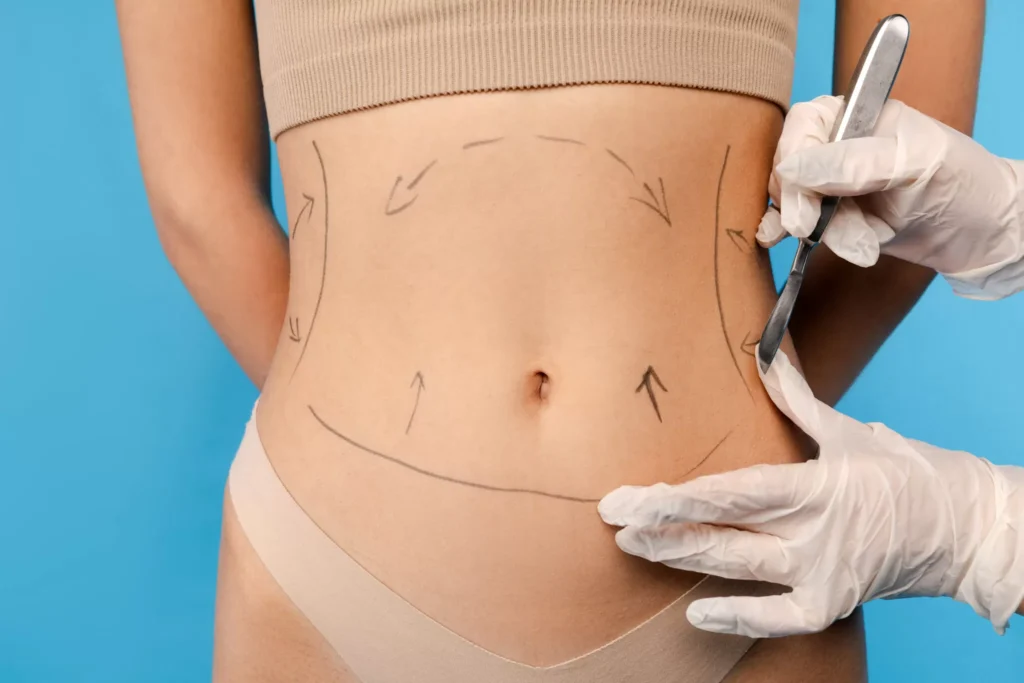One of the most common questions patients ask after abdominoplasty (tummy tuck) is:
“When can I safely return to exercise?”
While staying active is essential for long-term health and surgical results, it’s crucial to understand that healing comes first. Rushing back to exercise too soon can interfere with your recovery, increase complications, or even affect your final results.
In this guide, we’ll walk you through a safe and realistic timeline for resuming exercise after a tummy tuck—and what types of activity are appropriate at each stage.
Why Exercise Timing Matters After a Tummy Tuck
A tummy tuck involves:
- Removal of excess abdominal skin
- Tightening of abdominal muscles (rectus plication)
- Liposuction (in many cases)
- Repositioning of the belly button
Because of the depth of tissue involvement, your core muscles need time to heal. Jumping back into workouts too early can:
- Strain healing tissues
- Lead to fluid buildup (seroma)
- Cause wound separation or hernia
- Prolong swelling and bruising
General Timeline for Returning to Exercise
🚨 Important: Always follow your surgeon’s personalized recommendations, as recovery varies based on your health, the surgical technique, and whether additional procedures were performed.
Week 1–2: Rest and Light Movement
- No formal exercise
- Focus on gentle walking around the house
- Helps prevent blood clots and improves circulation
- Avoid standing fully upright—your body is still adjusting
✅ Tip: Short walks every few hours are encouraged to promote healing and reduce swelling.
Week 3–4: Light Walking
- Begin short, slow walks outdoors or on a treadmill
- Still no core exercises or strength training
- Monitor for fatigue, tightness, or discomfort
⚠️ Avoid lifting anything over 10–15 pounds, including children or pets.
Week 5–6: Low-Impact Cardio
- Gradually increase walking speed or duration
- Consider light stationary cycling or elliptical work
- Still avoid abdominal exercises, running, or lifting weights
✅ Tip: Wear your compression garment as directed during activity for support.
Week 7–8: Light Strength Training (Non-Core)
- Begin light upper and lower body workouts
- Seated dumbbell presses
- Leg presses
- Resistance band work
- Avoid planks, crunches, sit-ups, or twists
- Listen to your body and stop if anything feels tight or painful
Week 10–12+: Core Training and More Intense Workouts
- With your surgeon’s clearance, begin core-focused exercises:
- Modified planks
- Pelvic tilts
- Bridges
- Light Pilates or yoga
- Slowly return to running, weightlifting, and higher-impact cardio
- Build intensity gradually over several weeks
🧘♀️ Yoga or barre may be reintroduced during this phase, avoiding deep back bends or core contractions until fully healed.
Warning Signs You’re Overdoing It
Watch for these red flags, which may indicate you’re pushing too hard:
- Sharp pain or pulling sensation around the incision or belly button
- Swelling that increases after exercise
- Fluid buildup (feels like a soft lump)
- Wound separation or oozing
- Prolonged fatigue
If you notice any of these symptoms, stop activity and contact your surgeon immediately.
Tips for Returning to Exercise Safely
- Start slow and progress gradually
- Use proper form—especially for core exercises
- Avoid bouncing or twisting movements early on
- Stay hydrated and nourished to support healing
- Wear supportive clothing or a light compression wrap if recommended
Benefits of Exercise After Tummy Tuck
Once you’re cleared to resume workouts, exercise offers long-term benefits:
- Maintains your tummy tuck results
- Supports a healthy weight
- Builds core strength and stability
- Improves circulation and skin tone
- Boosts mood and energy
💪 Remember: The best tummy tuck results are preserved through healthy living, not just surgery.
Final Thoughts
Returning to exercise after a tummy tuck is a gradual process—but with the right approach, you can safely rebuild strength, improve tone, and protect your investment in your body. Always follow your surgeon’s advice and respect your body’s pace.




